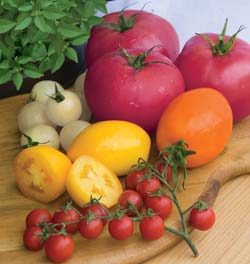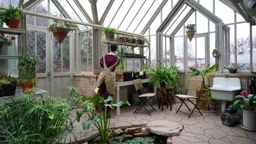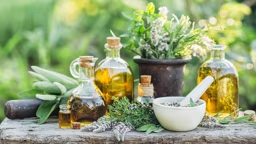 The best summer meals are simple: just-picked produce warmed by the sun and at the pinnacle of ripeness. The best way to make those meals come true?
The best summer meals are simple: just-picked produce warmed by the sun and at the pinnacle of ripeness. The best way to make those meals come true?
Grow your own fruits and vegetables. It’s not as hard as you think.
Here are eight ways to make your backyard bountiful:1. Select your site:
The best boost you can give your garden is choosing a bright location. “Plants need at least six hours of sunshine a day. Eight is better,” says Marguerite Wells, an instructor in Cornell University’s Horticultural Department. Also choose a place that’s safe from errant soccer balls and pets, and use a fence if deer and other wildlife pose a problem. If possible, locate vegetables near your home’s water source, so they’ll be easy to irrigate. You can also tuck vegetables and herbs into sunny flower gardens to vary visual interest.2. Dig in:
The fastest method to clear space for a garden is renting or borrowing a tiller. It removes the grass and loosens soil. Make sure the ground is free of buried cables before starting, and clear out roots, large rocks and other debris before planting.3. Prep the soil:
A test kit from your county extension office or garden center will help you balance your soil’s pH before planting. Soil in states with a lot of limestone may be heavily alkaline and need an additive, such as sulfur. Pine forests may be acidic and require the addition of lime or something even easier: wood ash from your fireplace. A few plants, such as blueberries, thrive in acidic soil, but most vegetables need a neutral base to produce well.Another key step is adding compost. It also helps balance the soil and builds an ideal texture. It helps heavy clay soil drain and sandy soil hold moisture.
4. Choose seedlings:
If you’re an absolute beginner or live in states with short growing seasons, jump-start your harvest with seedlings instead of seeds. Look for ones that are healthy and compact. They shouldn’t tower 2 feet above a one-inch pot.5. Follow instructions:
Use the instructions on seedling containers or seed packets for depth and spacing when planting. Thin out crowded seedlings. Also pay attention to planting schedules; cool-weather lovers, such as such as lettuce and peas, should go in first.6. Protect plants:
Mulching your garden is like insulating your home. Add a layer of chopped leaves, a sprinkling of straw or a sheet of plastic near your plants to keep roots moist and cool during hot spells and watering bans. Mulching also protects plants during cool weather and discourages weeds.7. Water wisely:
An old-fashioned soaker hose that’s run once or twice a week promotes deeper, stronger roots than daily watering, Marguerite says, and it helps keep plants dry and disease-free. 8. Savor and share:
8. Savor and share:
Need to troubleshoot and want to share your triumphs? Call your county extension office for free advice or to find a local gardening club. It’s a great way to discover produce varieties you’ll never find at the supermarket. Final Thought | Harvest Time:
The key to an abundant harvest and the best flavor is to pick vegetables just before full maturity. (A taste test is your best bet for determining exactly when this is.) Vegetables that boast leaves or stems, such as cabbages and onions, can usually be harvested over a long period.Vegetables that are the fruit of the plant, such as peas, beans and tomatoes, should be picked when they’re first ripe (every couple of days). Melons and squash are ripe when the underside is yellow. Be sure to remove overripe vegetables; if you don’t they’ll impede the growth on veggies still developing.
Learn: How To: Design a Cabin Sunroom











